Abstract
The partial thromboplastin time test provides a convenient and sensitive screening procedure for deficiencies of thromboplastic factors, especially factors VIII and IX. The test is carried out after preincubating the plasma for 10 minutes with kaolin, and Inosithin is used as a platelet substitute.
The `normal range' of the test has been estimated in terms of the differences encountered between random normal plasmas tested in pairs, because individual patients are usually tested against single control subjects. A patient's partial thromboplastin time should be regarded as abnormal if it is more than six seconds longer than the control time. In the diagnosis of haemophilia, patients' plasmas with concentrations of factor VIII as low as about 20% might be regarded as being within the range of normal, if the selected control subject's factor VIII happened to lie near the lower end of the normal range.
When mild haemophilia is suspected, discrimination may be improved by diluting both the patient's and the control plasmas 1 in 20 in haemophilic plasma. With the test modified in this way the clotting time is prolonged, though the range of differences among normal subjects is unaltered, and plasmas with factor VIII concentrations below about 30%, i.e., in undiluted plasma, would be unlikely to be regarded as normal.
The partial thromboplastin time may be similarly modified as a screening test for factor IX deficiency.
Some clinical examples are reported.
Full text
PDF
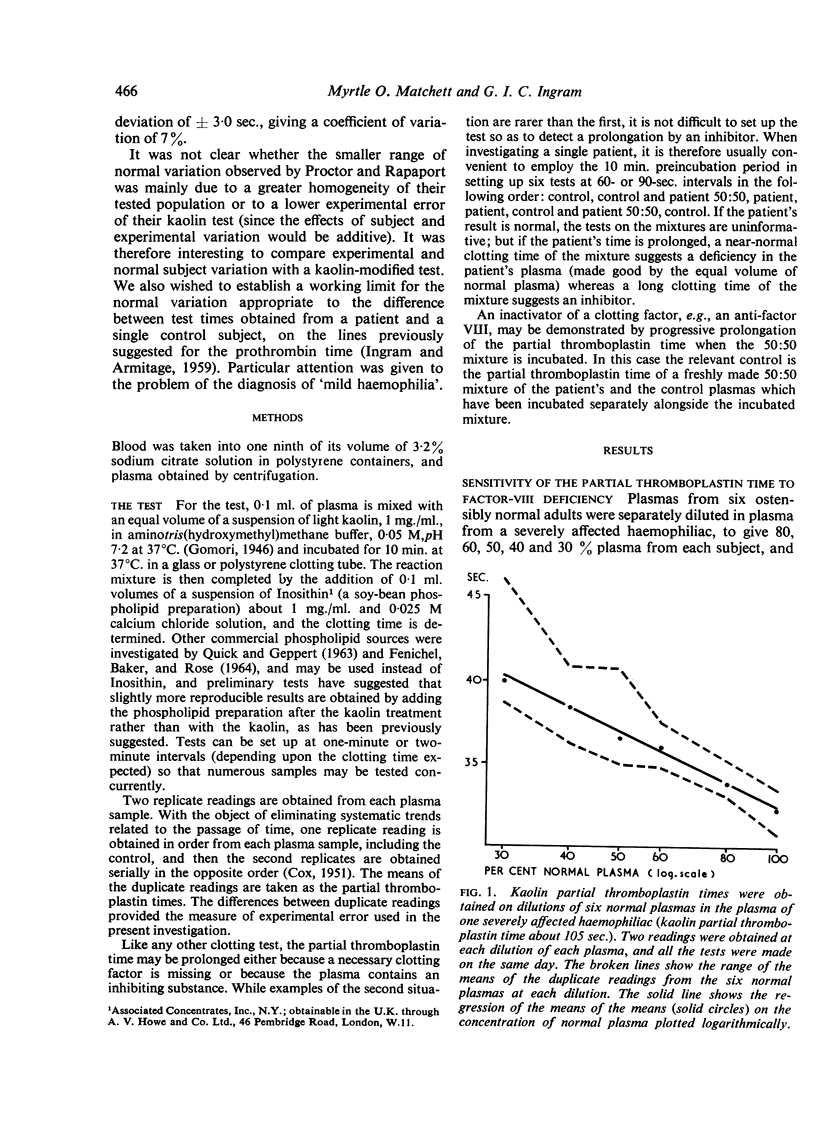
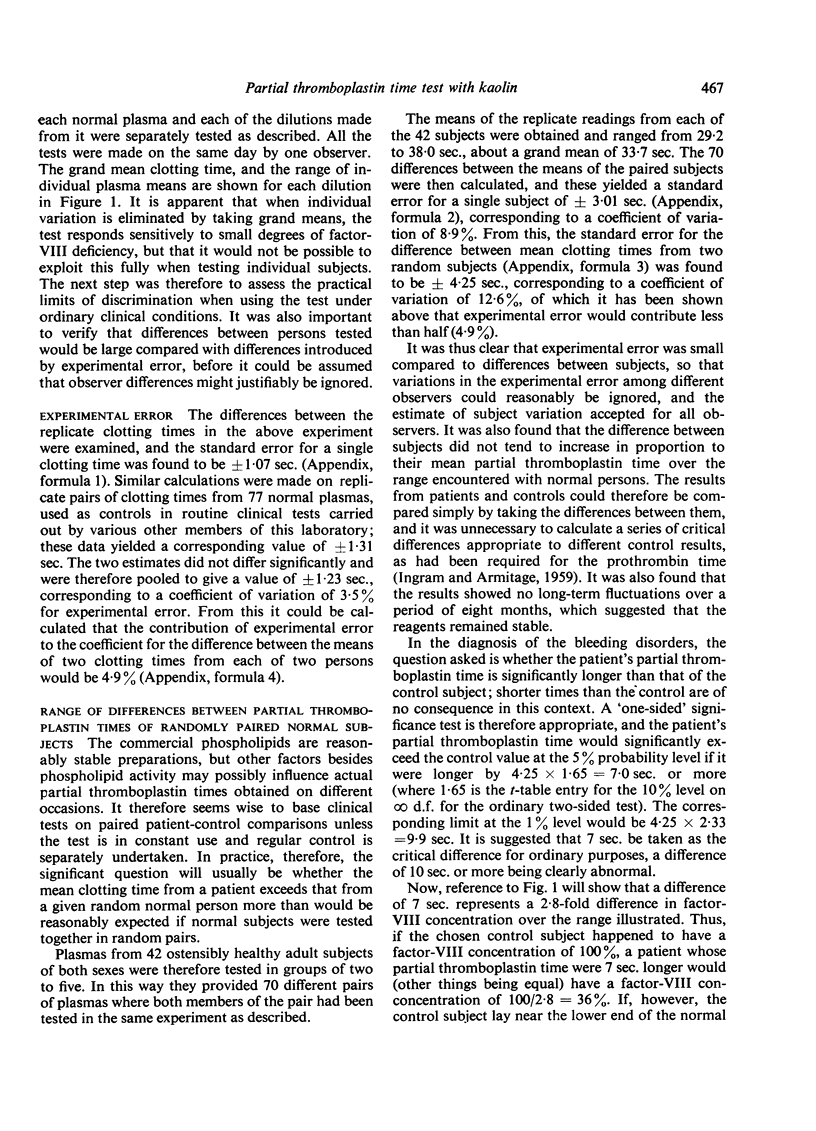
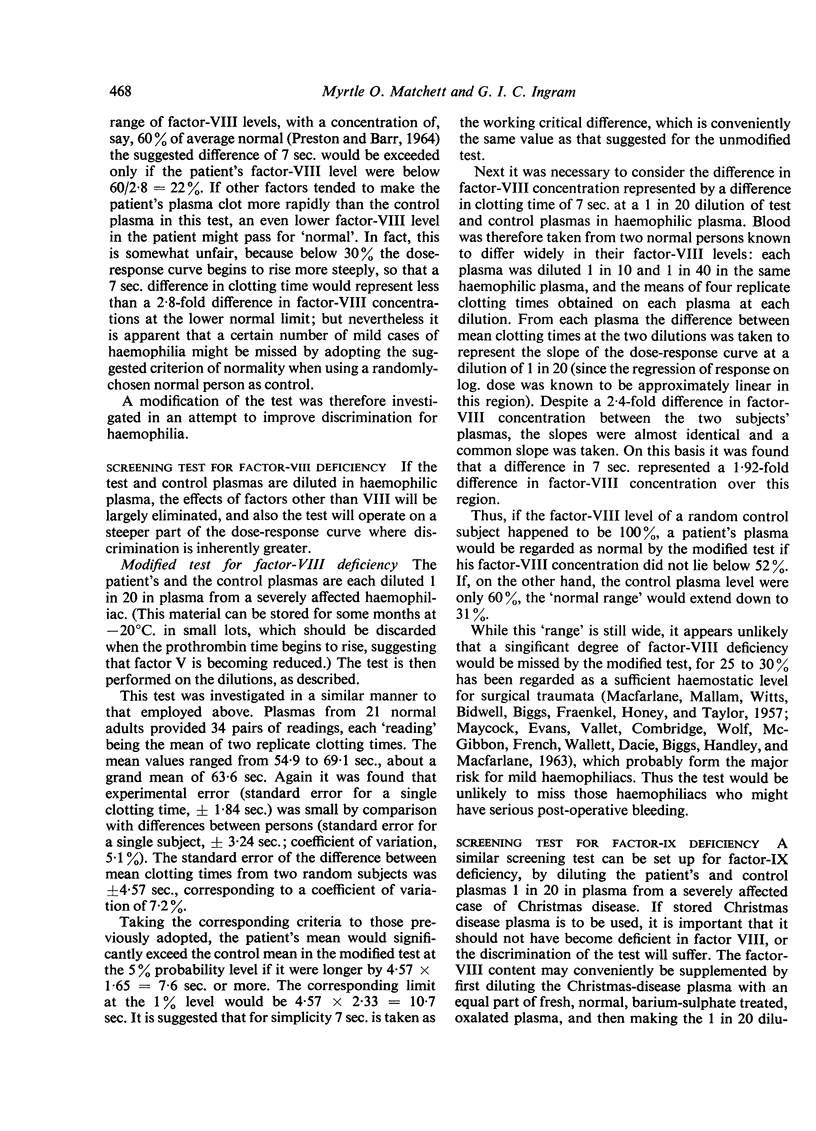
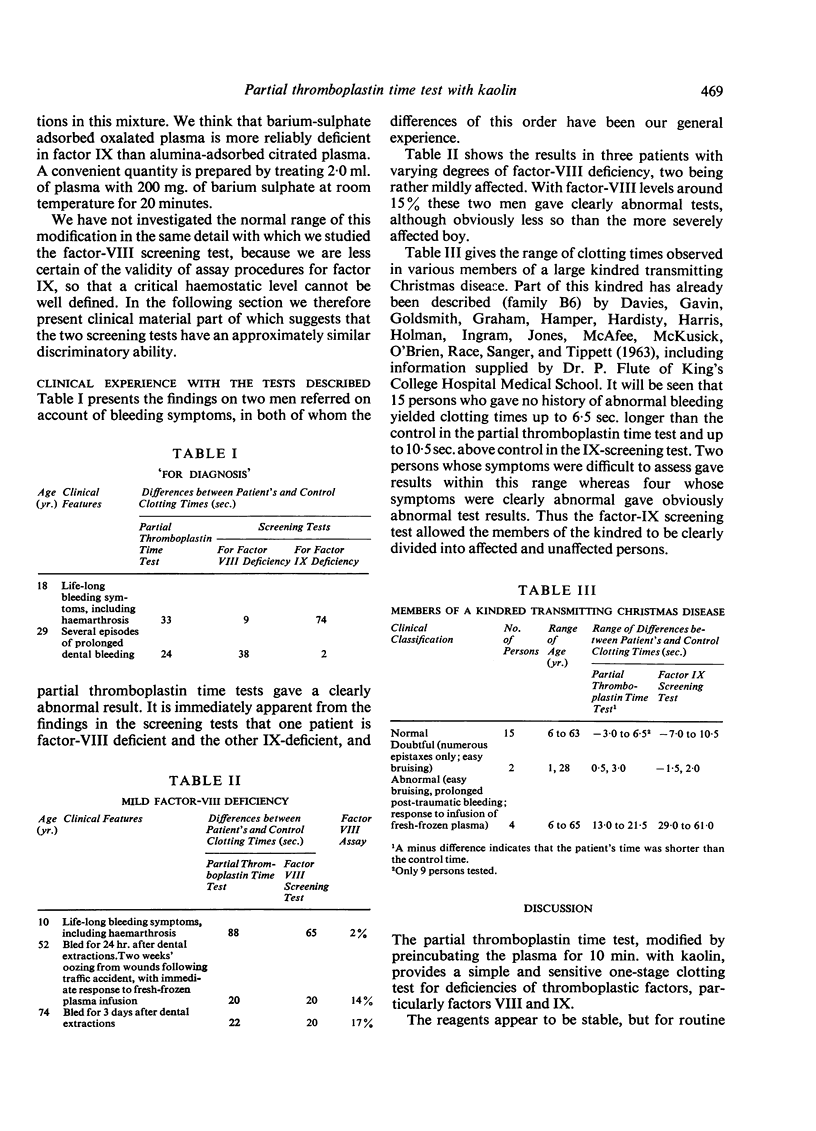
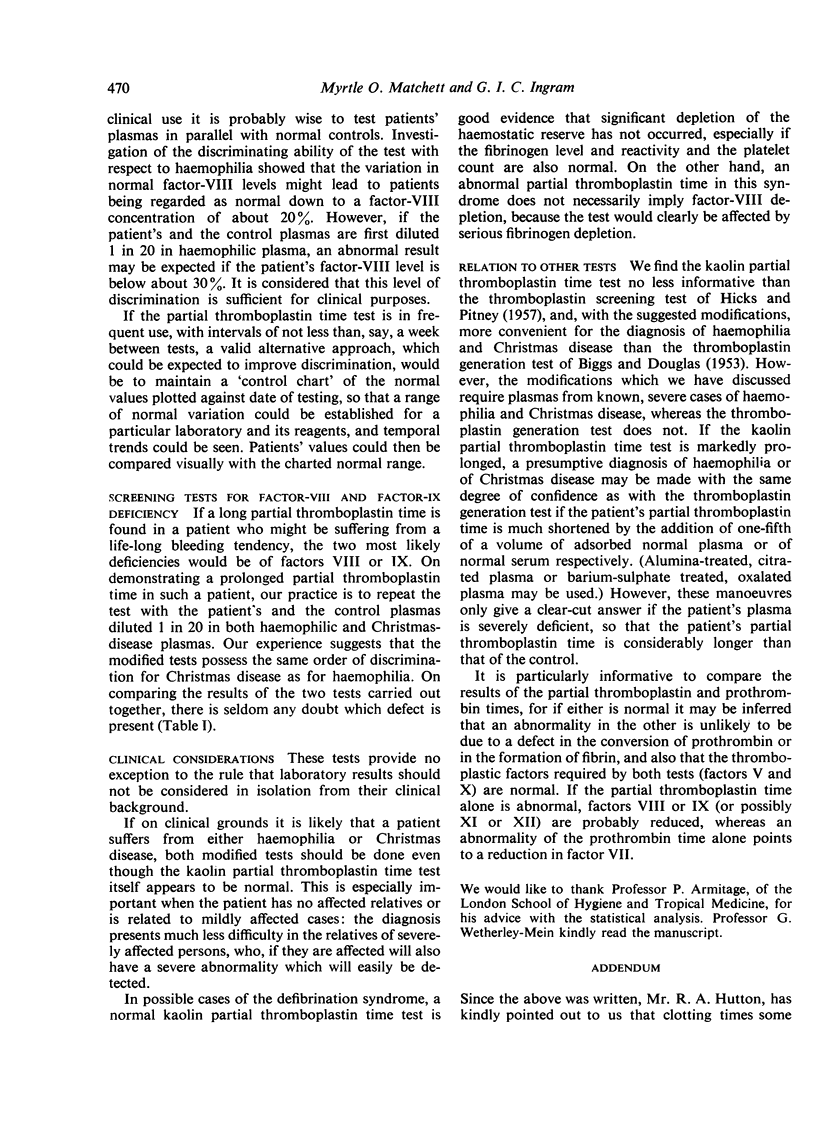
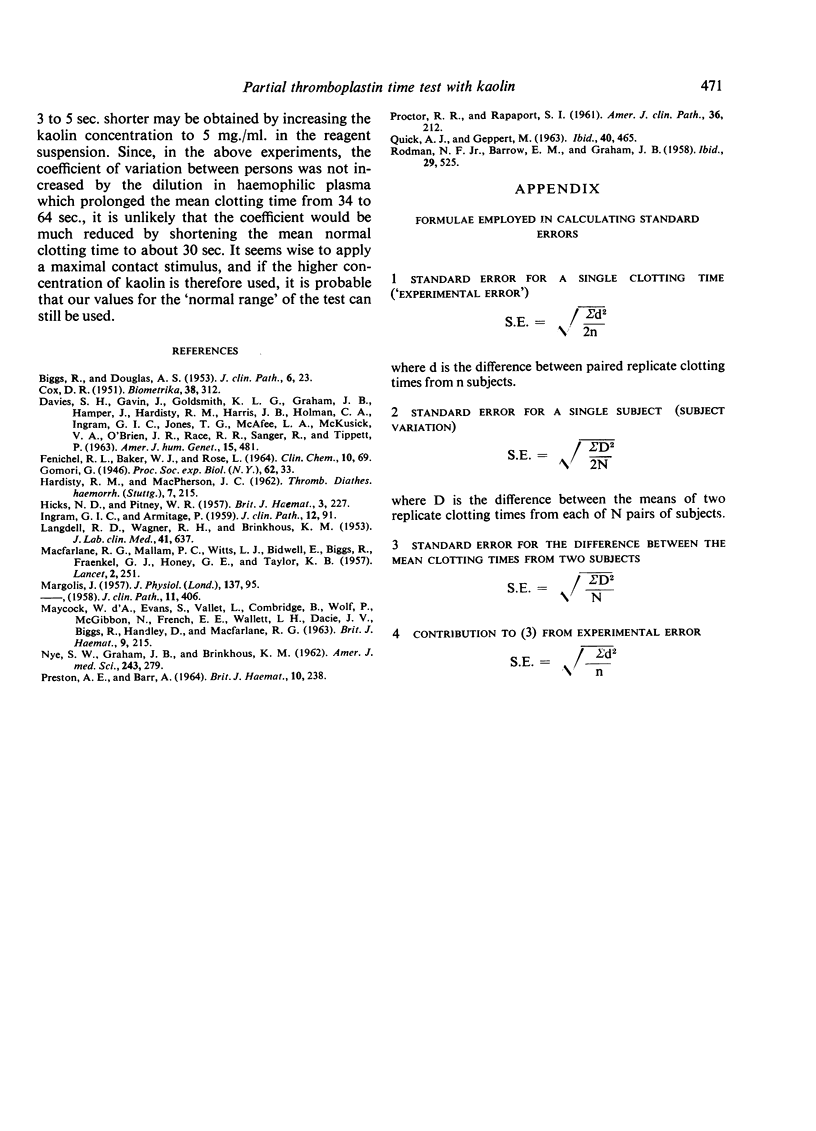
Selected References
These references are in PubMed. This may not be the complete list of references from this article.
- BIGGS R., DOUGLAS A. S. The thromboplastin generation test. J Clin Pathol. 1953 Feb;6(1):23–29. doi: 10.1136/jcp.6.1.23. [DOI] [PMC free article] [PubMed] [Google Scholar]
- DAVIES S. H., GAVIN J., GOLDSMITH K. L., GRAHAM J. B., HAMPER J., HARDISTY R. M., HARRIS J. B., HOLMAN C. A., INGRAM G. I., JONES T. G. THE LINKAGE RELATIONS OF HEMOPHILIA A AND HEMOPHILIA B (CHRISTMAS DISEASE) TO THE XG BLOOD GROUP SYSTEM. Am J Hum Genet. 1963 Dec;15:481–492. [PMC free article] [PubMed] [Google Scholar]
- FENICHEL R. L., BAKER W. J., ROSE L. THE USE OF A STABILIZED PARTIAL THROMBOPLASTIN REAGENT IN THE PARTIAL THROMBOPLASTIN TEST. Clin Chem. 1964 Jan;10:69–74. [PubMed] [Google Scholar]
- HARDISTY R. M., MACPHERSON J. C. A one-stage factor VIII (antihaemophilic globulin) assay and its use on venous and capillary plasma. Thromb Diath Haemorrh. 1962 May 15;7:215–228. [PubMed] [Google Scholar]
- HICKS N. D., PITNEY W. R. A rapid screening test for disorders of thromboplastin generation. Br J Haematol. 1957 Apr;3(2):227–237. doi: 10.1111/j.1365-2141.1957.tb05790.x. [DOI] [PubMed] [Google Scholar]
- INGRAM G. I., ARMITAGE P. The normal range of the prothrombin time estimated by Quick's method. J Clin Pathol. 1959 Jan;12(1):91–92. doi: 10.1136/jcp.12.1.91-b. [DOI] [PMC free article] [PubMed] [Google Scholar]
- LANGDELL R. D., WAGNER R. H., BRINKHOUS K. M. Effect of antihemophilic factor on one-stage clotting tests; a presumptive test for hemophilia and a simple one-stage antihemophilic factor assy procedure. J Lab Clin Med. 1953 Apr;41(4):637–647. [PubMed] [Google Scholar]
- MARGOLIS J. Initiation of blood coagulation by glass and related surfaces. J Physiol. 1957 Jun 18;137(1):95–109. doi: 10.1113/jphysiol.1957.sp005799. [DOI] [PMC free article] [PubMed] [Google Scholar]
- NYE S. W., GRAHAM J. B., BRINKHOUS K. M. The partial thromboplastin time as a screening test for the detection of latent bleeders. Am J Med Sci. 1962 Mar;243:279–287. doi: 10.1097/00000441-196203000-00002. [DOI] [PubMed] [Google Scholar]
- PRESTON A. E., BARR A. THE PLASMA CONCENTRATION OF FACTOR VIII IN THE NORMAL POPULATION. II. THE EFFECTS OF AGE, SEX AND BLOOD GROUP. Br J Haematol. 1964 Apr;10:238–245. doi: 10.1111/j.1365-2141.1964.tb00698.x. [DOI] [PubMed] [Google Scholar]
- PROCTOR R. R., RAPAPORT S. I. The partial thromboplastin time with kaolin. A simple screening test for first stage plasma clotting factor deficiencies. Am J Clin Pathol. 1961 Sep;36:212–219. doi: 10.1093/ajcp/36.3.212. [DOI] [PubMed] [Google Scholar]
- QUICK A. J., GEPPERT M. SCREENING FOR BLEEDING STATES--THE PARTIAL THROMBOPLASTIN TEST. Am J Clin Pathol. 1963 Nov;40:465–472. doi: 10.1093/ajcp/40.5.465. [DOI] [PubMed] [Google Scholar]
- RODMAN N. F., Jr, BARROW E. M., GRAHAM J. B. Diagnosis and control of the hemophilioid states with the partial thromboplastin time (PTT) test. Am J Clin Pathol. 1958 Jun;29(6):525–538. doi: 10.1093/ajcp/29.6.525. [DOI] [PubMed] [Google Scholar]


